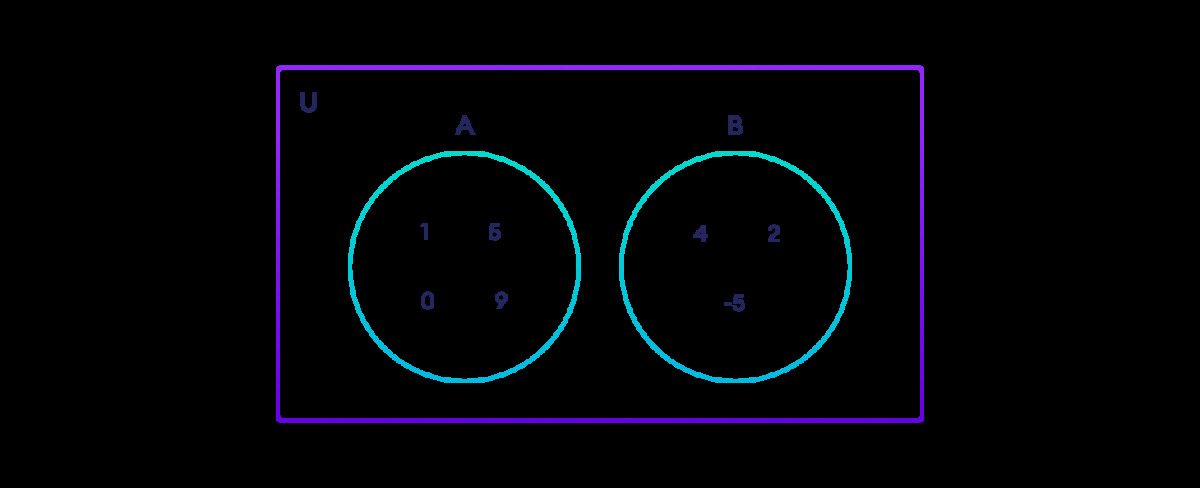如果两个集合是不相交的集合,isdisjoint() 方法返回 True。如果不是,则返回 False。
如果两个集合没有共同元素,则称它们为不相交集合。例如:
A = {1, 5, 9, 0}
B = {2, 4, -5}
这里,集合A 和B 是不相交的集合。

用法:
set_a.isdisjoint(set_b)
参数:
isdisjoint() 方法采用单个参数(一组)。
您还可以将可迭代(列表、元组、字典和字符串)传递给 disjoint() 。 isdisjoint() 方法会自动将可迭代对象转换为集合,并检查集合是否不相交。
返回:
isdisjoint() 方法返回
True如果两个集合是不相交的集合(如果set_a和set_b在上述语法中是不相交的集合)False如果两个集合不是不相交的集合
示例 1:isdisjoint() 如何工作?
A = {1, 2, 3, 4}
B = {5, 6, 7}
C = {4, 5, 6}
print('Are A and B disjoint?', A.isdisjoint(B))
print('Are A and C disjoint?', A.isdisjoint(C))
输出
Are A and B disjoint? True Are A and C disjoint? False
示例 2:isdisjoint() 以其他 Iterables 作为参数
A = {'a', 'b', 'c', 'd'}
B = ['b', 'e', 'f']
C = '5de4'
D ={1 : 'a', 2 : 'b'}
E ={'a' : 1, 'b' : 2}
print('Are A and B disjoint?', A.isdisjoint(B))
print('Are A and C disjoint?', A.isdisjoint(C))
print('Are A and D disjoint?', A.isdisjoint(D))
print('Are A and E disjoint?', A.isdisjoint(E))
输出
Are A and B disjoint? False Are A and C disjoint? False Are A and D disjoint? True Are A and E disjoint? False
相关用法
- Python Set issuperset()用法及代码示例
- Python Set issubset()用法及代码示例
- Python Set intersection_update()用法及代码示例
- Python Set intersection()用法及代码示例
- Python Set difference_update()用法及代码示例
- Python Set union()用法及代码示例
- Python Set pop()用法及代码示例
- Python Set add()用法及代码示例
- Python Set clear()用法及代码示例
- Python Set symmetric_difference()用法及代码示例
- Python Set symmetric_difference_update()用法及代码示例
- Python Set discard()用法及代码示例
- Python Set copy()用法及代码示例
- Python Set difference()用法及代码示例
- Python Set remove()用法及代码示例
- Python Set update()用法及代码示例
- Python Set转String用法及代码示例
- Python Pandas Series.cumsum()用法及代码示例
- Python Pandas Series.astype()用法及代码示例
- Python Pandas Series.nonzero()用法及代码示例
注:本文由纯净天空筛选整理自 Python Set isdisjoint()。非经特殊声明,原始代码版权归原作者所有,本译文未经允许或授权,请勿转载或复制。
